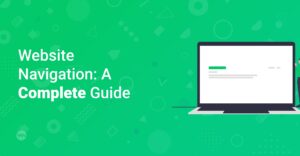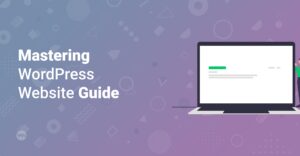Preface
Are you ready to create a stunning, modern blog that captures your audience’s attention? With the powerful combination of Elementor and the Astra theme, you can design a website that not only looks fantastic but also performs exceptionally well. This guide will walk you through the process, step-by-step, ensuring you have all the knowledge you need to build a blog that stands out. Whether you’re a beginner or an experienced web designer, you’ll find valuable insights and practical tips to elevate your website.
Get ready to unleash your creativity and build a blog that truly represents your brand and vision. Let’s dive in!
Why Choose Elementor and Astra for Your Blog?
Choosing the right tools is crucial for creating a successful blog. Elementor and Astra are a dynamic duo that offers unparalleled flexibility and ease of use. Here’s why they are a great choice:
- Ease of Use: Elementor’s drag-and-drop interface makes web design accessible to everyone, regardless of coding experience. Astra complements this with its user-friendly customization options.
- Customization: Astra provides numerous customization options, allowing you to tweak every aspect of your blog to match your brand. Combined with Elementor, the possibilities are endless.
- Performance: Astra is known for its lightweight code and optimized performance, ensuring your blog loads quickly. Fast loading times are crucial for SEO and user experience.
- SEO Friendly: Both Elementor and Astra are built with SEO best practices in mind, helping your blog rank higher in search engine results.
- Responsive Design: Ensure your blog looks great on all devices. Astra and Elementor make it easy to create responsive designs that adapt to different screen sizes.
Hint: Read our comprehensive guide on getting started with Elementor to understand the basics.
Setting Up Your WordPress Environment
Before you begin designing, you need a WordPress environment set up. Here’s a quick rundown:
- Choose a Hosting Provider: Select a reliable hosting provider. Some popular choices include Bluehost, HostGator, and DreamHost. They offer WordPress-optimized hosting plans.
- Install WordPress: Most hosting providers offer one-click WordPress installation. Follow their instructions to get WordPress up and running.
- Install Astra Theme:
- Go to Appearance > Themes in your WordPress dashboard.
- Click Add New and search for “Astra.”
- Click Install and then Activate.
Hint: You can enhance Astra’s functionality with Astra Pro, which offers advanced customization options.
- Install Elementor:
- Go to Plugins > Add New in your WordPress dashboard.
- Search for “Elementor.”
- Click Install Now and then Activate.
Info: Need help with plugin installation? Check out our guide on how to install WordPress plugins.
Designing Your Blog with Elementor and Astra
Now that you have WordPress, Astra, and Elementor installed, let’s start designing your blog.
1. Customize Astra Theme Options
Astra offers a wide range of customization options to set the foundation for your blog’s design.
- Header:
- Go to Appearance > Customize > Header Builder.
- Customize your header layout, logo, and navigation menu.
- Ensure your header is clean and easy to navigate.
/* Example CSS for a simple header */
.main-header-bar {
background-color: #fff;
box-shadow: 0 2px 4px rgba(0, 0, 0, 0.1);
}
- Footer:
- Go to Appearance > Customize > Footer Builder.
- Customize your footer layout, widgets, and copyright information.
- Include important links, social media icons, and a contact form.
- Blog Layout:
- Go to Appearance > Customize > Blog.
- Choose a layout style (e.g., grid, list, single post).
- Customize the appearance of your blog posts, including featured images, titles, and excerpts.
2. Create a Homepage with Elementor
Your homepage is the first impression visitors have of your blog. Make it count with Elementor’s visual editor.
- Create a New Page:
- Go to Pages > Add New in your WordPress dashboard.
- Give your page a title (e.g., “Homepage”).
- Click Edit with Elementor.
- Design Your Homepage:
- Use Elementor’s drag-and-drop interface to add sections, columns, and widgets.
- Include a hero section with a captivating headline and a call-to-action.
- Showcase your latest blog posts using the “Posts” widget.
- Add testimonials, about section, and a contact form.
3. Design Your Blog Post Template
Create a consistent and visually appealing design for your blog posts using Elementor’s Theme Builder.
- Access Theme Builder:
- Go to Templates > Theme Builder in your WordPress dashboard.
- Click Add New and choose “Single Post.”
- Give your template a name and click Create Template.
- Design Your Template:
- Use Elementor’s dynamic content widgets to display the post title, featured image, content, and author information.
- Customize the typography, colors, and spacing to match your brand.
- Add social sharing buttons and a comment section.
/* Example CSS for styling a blog post title */
.elementor-heading-title {
font-size: 36px;
font-weight: bold;
color: #333;
}
4. Optimize for Mobile Responsiveness
Ensure your blog looks great on all devices by optimizing for mobile responsiveness.
- Elementor’s Responsive Mode:
- Use Elementor’s responsive mode to preview your design on different screen sizes (desktop, tablet, mobile).
- Adjust the layout, font sizes, and spacing to ensure everything looks great on smaller screens.
- Astra’s Mobile Options:
- Astra provides additional mobile customization options in the theme customizer.
- Adjust the header, navigation, and footer for mobile devices.
Hint: Focus on readability and usability on mobile devices. Use larger font sizes and ensure buttons are easy to tap.
5. Enhance User Experience
User experience is key to keeping visitors engaged on your blog.
- Navigation:
- Create a clear and intuitive navigation menu.
- Use categories and tags to organize your content.
- Add a search bar to help visitors find what they’re looking for.
- Readability:
- Use a readable font and appropriate font sizes.
- Break up large blocks of text with headings, subheadings, and bullet points.
- Use white space effectively to improve readability.
- Call-to-Actions:
- Include clear and compelling call-to-actions throughout your blog.
- Encourage visitors to subscribe to your newsletter, follow you on social media, and leave comments.
- Images and Videos:
- Use high-quality images and videos to enhance your content.
- Optimize images for web to improve loading times.
**Hint:** Optimize your images for faster loading times. Use tools like TinyPNG to compress images without losing quality.
Info: Learn how to choose the right fonts for your website to improve readability.
SEO Optimization for Your Blog
To attract more visitors to your blog, you need to optimize it for search engines.
- Keyword Research:
- Identify relevant keywords that your target audience is searching for.
- Use tools like Google Keyword Planner, Ahrefs, or SEMrush to find keywords.
- On-Page SEO:
- Use your target keywords in your blog post titles, headings, and content.
- Optimize your meta descriptions and image alt tags.
- Ensure your blog is mobile-friendly and loads quickly.
- Yoast SEO Plugin:
- Install the Yoast SEO plugin to help you optimize your blog for search engines.
- Use Yoast’s analysis to improve your content’s SEO score.
- Internal and External Linking:
- Link to relevant internal pages on your blog to improve navigation and SEO. For example you can use following links: wordpress-functions-php or wordpress-style-css.
- Link to authoritative external sources to provide additional value to your readers. For example you can use following links: SEO Starter Guide or Beginners Guide to SEO. Another good resource is the SEO Basics Guide by Ahrefs.
**Hint:** Use descriptive alt tags for your images to improve SEO and accessibility.
Info: Optimize your website for SEO with our quickstart guide to SEO for WordPress.
Final Touches and Going Live
Before launching your blog, there are a few final touches to consider.
- Test Thoroughly:
- Test your blog on different devices and browsers to ensure everything works as expected.
- Check for broken links, typos, and formatting issues.
- Set Up Analytics:
- Install Google Analytics to track your blog’s traffic and user behavior.
- Monitor your key metrics to identify areas for improvement.
- Create a Backup:
- Back up your website before making any major changes.
- Use a plugin like UpdraftPlus or BackupBuddy to automate backups.
- Launch Your Blog:
- Once you’re happy with your blog, it’s time to launch it to the world.
- Promote your blog on social media and other channels to attract your first visitors.
Conclusion
Congratulations on building your modern blog with Elementor and Astra! By following this guide, you’ve created a visually appealing, user-friendly, and SEO-optimized blog that’s ready to attract and engage your target audience. Remember to continuously update your content, monitor your analytics, and make improvements based on user feedback. With dedication and hard work, your blog will become a valuable resource for your readers and a powerful tool for your brand. Happy blogging!



